Royal Welsh Show: Showground marks 50th anniversary
- Published
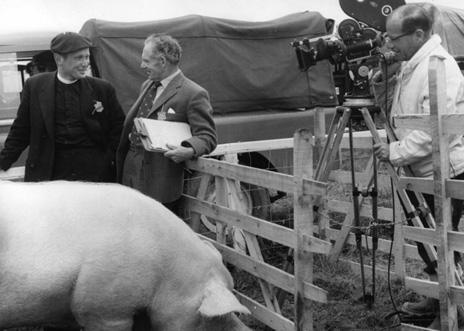
It is 50 years since the Royal Welsh Show moved permanently to Powys
The home of the Royal Welsh Show in Powys is celebrating its 50th anniversary with the launch of a new book.
The first Royal Welsh was held in Aberystwyth in 1904 and it remained in the Ceredigion town until 1910.
The event then moved between dozens of different venues before settling on its permanent site in Llanelwedd in 1963.
The decision has proved a huge success and there are estimates the show is worth about £40m to the local economy.
David Howell, an emeritus professor at Swansea University and who specialises in rural history, wrote Taking Stock, a book marking the centenary of the Royal Welsh Agricultural Society in 2004.
He has also helped produce the new book charting the development of the showground - the Royal Welsh Show at Llanelwedd 50 Years in Pictures.
Just over 42,000 people visited the first show in Llanelwedd, near Builth Wells, in 1963.
Since then millions of people have passed through the gates, along with a few animals, with a record 241,099 revellers enjoying the event's four days last year.
But Llanelwedd was not the first choice of those searching for a permanent site for the agricultural showpiece and it nearly ended up back in Aberystwyth.
"On 10 June, 1960 the permanent site working party recommended Aberystwyth," Prof Howell said.
"It had been the starting point of the show and there was an emotional attachment but by the following November the working party was looking at a number of possible sites and had ruled out Aberystwyth.
"The search for a permanent site was propelled forward by the awful (wet) conditions of the 1958 show in Bangor.
"The 1954 show in Machynlleth was also blighted by the wet weather which led the Daily Express to brand it the Royal Squelch Show.
"But on 16 December, 1960 the decision was made to locate the show in Llanelwedd."
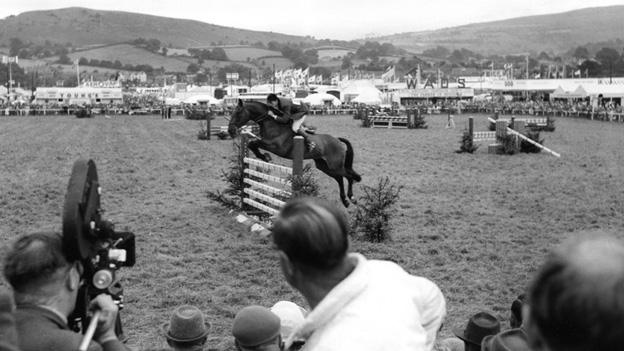
Filming show jumping at Royal Welsh Show - the first at Llanelwedd in 1963
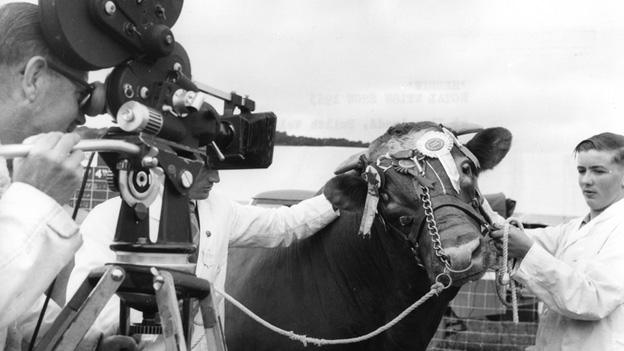
The prize bull from the 1963 show
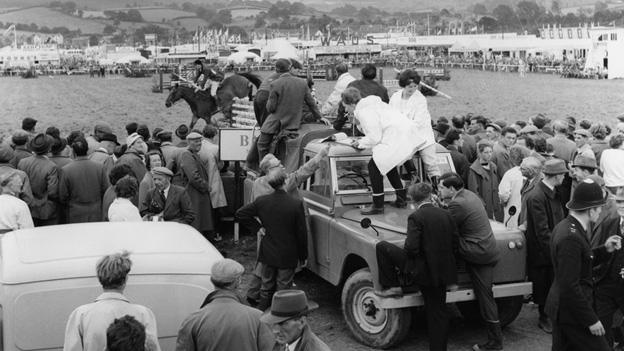
The BBC crew get a vantage point to film the show jumping 50 years ago
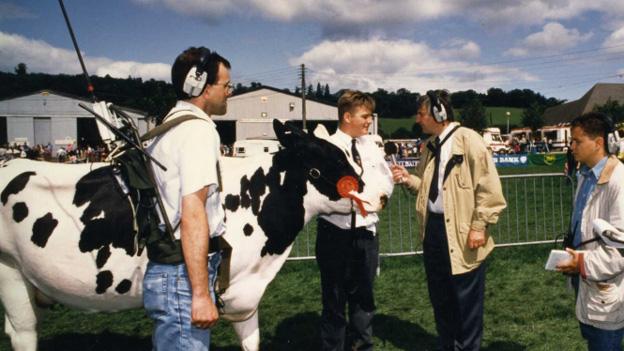
A bull owner being interviewed at the 1992 show
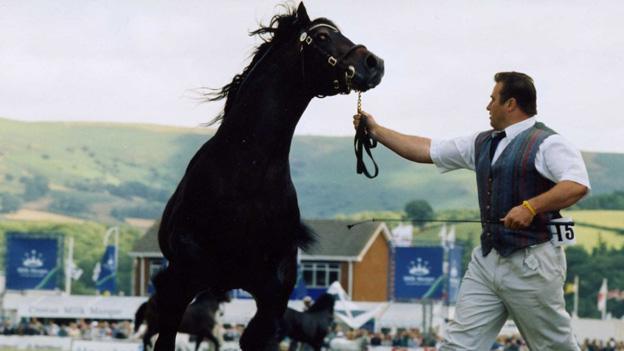
A horse being shown at the Royal Welsh Show in 1995
Prof Howell said the show had decided on a fixed location for a number of reasons.
Tents used as dining areas in the 1950s and early 1960s as the show travelled around Wales were not attracting the "best caterers", while showground lavatories left a lot to be desired.
"The expanding size of agricultural shows - in general - meant that the Royal Welsh was unable to find suitable sites around Wales either," he added.
"Llanelwedd was eventually selected because there was plenty of accommodation in the area, especially in nearby Llandrindod Wells.
"The was also a 176-acre site available, 104 of it flat and it met the society's needs.
"There was also the exceptional enthusiasm of the local people. The Builth Wells permanent site committee raised £22,000 - the cost of the site was £38,000."
A surplus of £15,000 from the 1961 Gelli Aur show was put towards the permanent site.
But not everybody was happy. There was objections to Llanelwedd especially from people in north Wales who thought it was too far to travel, said Prof Howell.
However, the by the mid-1970s opinions had altered and in 1976 the show attracted 100,000 people for the first time. By 1979 visitors numbers had topped 140,000 and two years later the show's duration extended from three days to four.
Success
During this period the showground was changing too.
This year marks 50 years since the Royal Welsh show settled in Llanelwedd.
In 1972 the exhibition hall opened followed by the Carmarthenshire livestock building a year later, while the South Glamorgan exhibition hall opened its doors in 1975.
In recent years a number of other new buildings have opened, including the imposing food hall and the new members' centre.
So what is the secret of the Royal Welsh Show's success?
Agricultural shows were once the highlight of the farming diary but in the last few years a number of high profile events - including The Royal Show in Warwickshire - have been forced to close.
"People have a great deal of pride in the show and along with rugby, the National Eisteddfod and the Cardiff Singer of the World it is one of our main events in Wales," said Prof Howell.
"The media is also very important to the show and provides it with a huge amount of coverage."

Show visitor numbers hit 100,000 for the first time in 1976 and last year the event attracted over 240,000 people
- Published10 June 2013
- Published18 May 2013
- Published4 November 2010